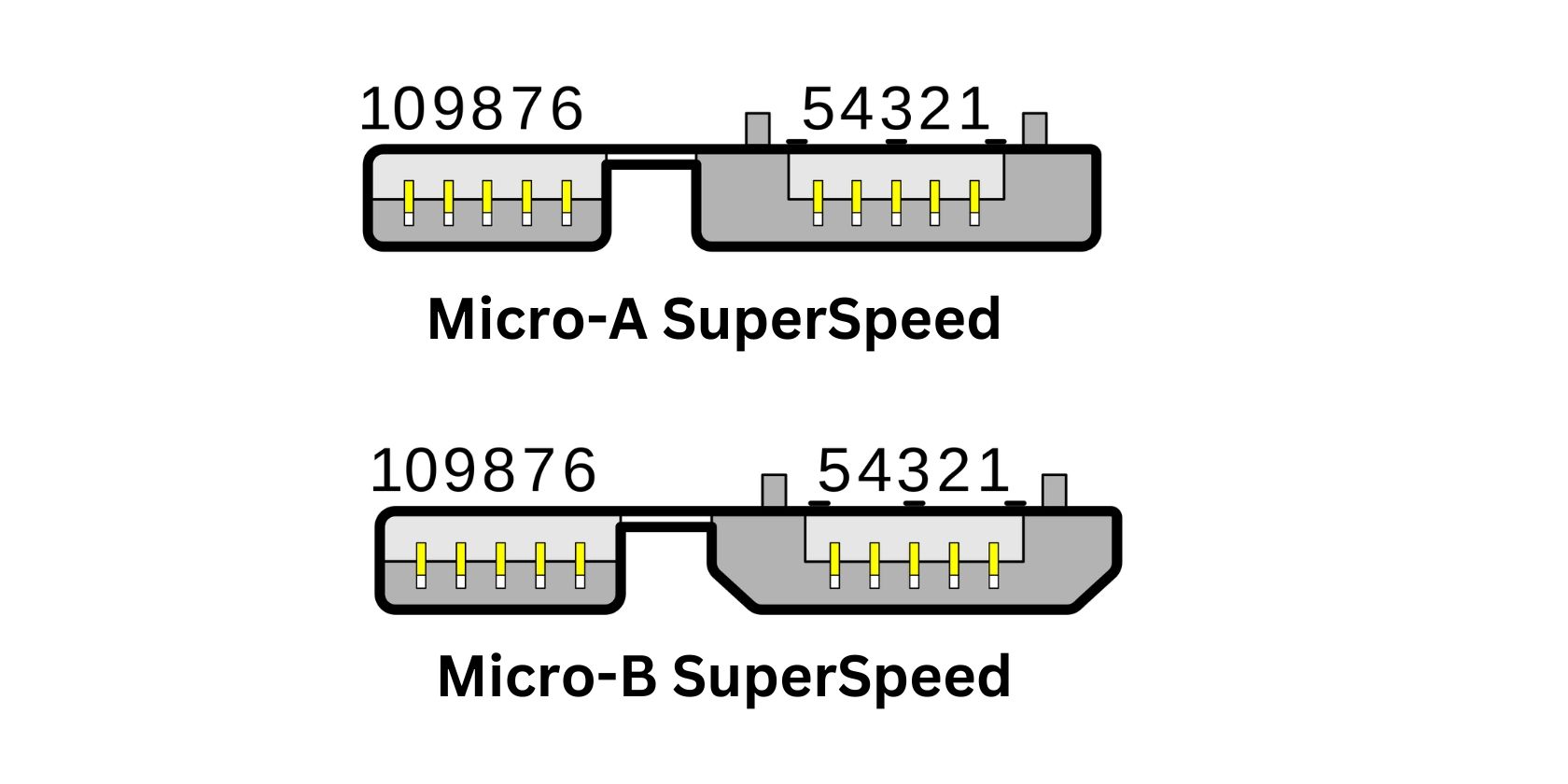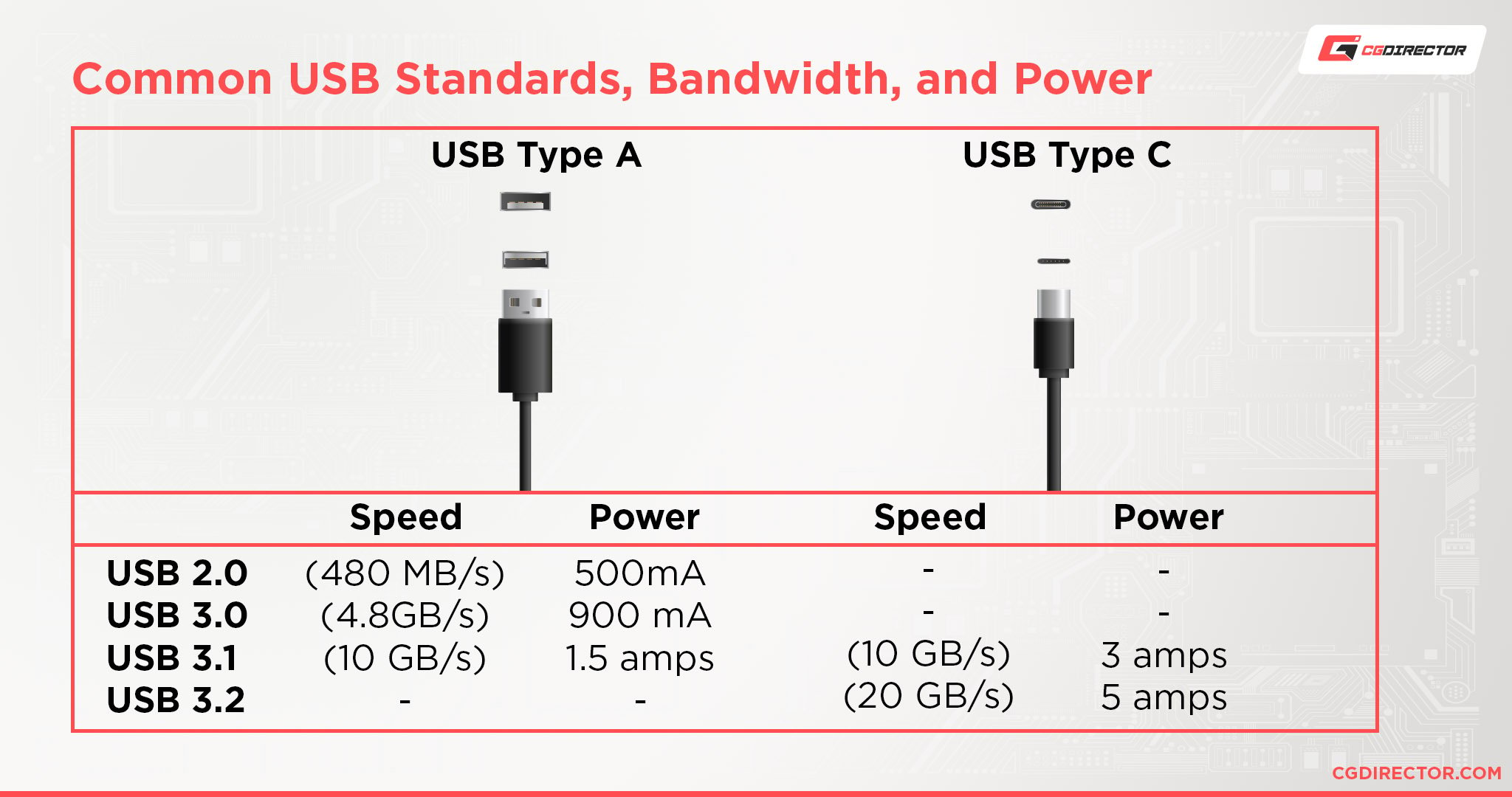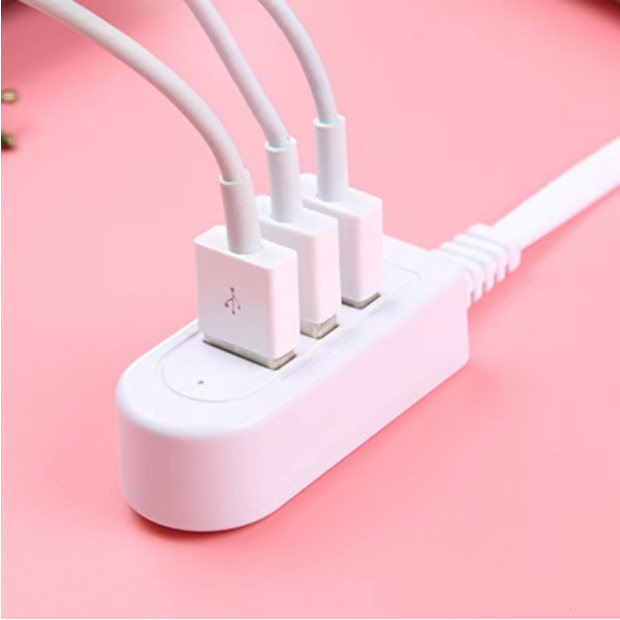Top Notch Tips About Does A USB Hub Limit Speed

How To Tell What Type Of USB Port You Have
The Great USB Hub Speed Mystery
1. Unraveling the USB Hub Speed Conundrum
Ever plugged a bunch of devices into a USB hub and wondered if you were suddenly transported back to the dial-up era? You're not alone! The question of whether a USB hub limits speed is a common one, and its a valid concern. We rely on our USB devices for everything from transferring files to charging our gadgets, and no one wants a bottleneck slowing things down. Let's dive into the heart of this digital dilemma and see if we can untangle the truth.
Imagine a highway where all the traffic has to squeeze through a single tollbooth. That's kind of what a USB hub does. It takes one USB port on your computer and splits it into multiple ports. But here's the kicker: all those devices sharing the same "tollbooth" might impact the overall speed. The extent of this impact, however, depends on a few key factors, which we'll explore shortly.
Think of it like this: you're throwing a party and inviting all your friends. If they all try to squeeze through the front door at the same time, things are going to get congested. But if some people come in through the back door, or trickle in over time, the flow is much smoother. Similarly, the type of USB hub, the devices connected, and how they're being used all play a role in determining whether you'll experience a speed decrease. No one wants a party where the guests are stuck in the doorway!
So, does a USB hub limit speed? The short answer is: it can, but not always. It's more nuanced than a simple yes or no. Keep reading, and we'll get down to the important bits and see how to navigate this speed bump, so to speak.

The USB Speed Spectrum
2. Delving into USB Standards for Optimal Performance
Before we can truly understand the impact of a USB hub, we need a crash course in USB standards. USB, or Universal Serial Bus, has evolved significantly over the years, with each new version bringing faster data transfer rates. We're talking USB 2.0, USB 3.0 (and its various iterations like 3.1 and 3.2), and the latest and greatest, USB4. Each one has different speed capabilities, so it's important to know what you're working with.
USB 2.0, the older brother, offers a maximum data transfer rate of 480 Mbps (megabits per second). While it's perfectly fine for connecting low-bandwidth devices like keyboards and mice, it's not ideal for transferring large files or streaming high-definition video. Plugging a super-fast external hard drive into a USB 2.0 hub is like putting a Ferrari engine in a go-kart; you're not going to get the full potential.
USB 3.0 (and its successors) steps things up considerably, boasting transfer rates of up to 5 Gbps (gigabits per second). That's roughly ten times faster than USB 2.0! This is the sweet spot for most modern devices, offering plenty of bandwidth for external hard drives, SSDs, and other peripherals that demand speed. Just be mindful that a USB 3.0 hub will only deliver USB 3.0 speeds if it's connected to a USB 3.0 port on your computer and the devices connected to it are also USB 3.0 compatible. Sounds obvious, but easily overlooked.
Then we have USB4, the newest kid on the block. It can handle speeds of up to 40 Gbps! This is serious bandwidth for demanding applications like video editing and large data transfers. If you're working with cutting-edge tech, USB4 is the way to go. The key takeaway here is to match the USB standard of your hub and devices to get the best possible performance. Mismatched standards can lead to bottlenecks and slower speeds.

USB Speeds, Types And Features Explained Tech Advisor, 40 OFF
Powered vs. Unpowered
3. The Power Play
USB hubs come in two main flavors: powered and unpowered. A powered hub has its own power adapter, while an unpowered hub relies solely on the power provided by the computer's USB port. This difference can significantly impact performance, especially when connecting multiple power-hungry devices. Imagine trying to run a marathon after only eating a small bag of chips; you need sufficient energy, and so do your devices.
Unpowered hubs are fine for low-power devices like keyboards, mice, and flash drives. However, if you're connecting devices that draw a significant amount of power, such as external hard drives or charging smartphones, an unpowered hub may struggle to provide enough juice. This can lead to slower transfer speeds, device malfunctions, or even the dreaded "device not recognized" error. It's like trying to power a whole house with a single extension cord; it's just not going to work.
Powered hubs, on the other hand, provide a dedicated power supply, ensuring that each connected device receives the power it needs. This can result in more stable and reliable performance, especially when connecting multiple high-power devices. Think of it as having a dedicated power outlet for each appliance in your kitchen; everything runs smoothly and efficiently. A powered hub is generally the better choice if you plan to connect multiple devices that draw a significant amount of power or if you want to ensure consistent performance.
Choosing between a powered and unpowered hub depends on your specific needs. If you're only connecting a few low-power devices, an unpowered hub might suffice. But if you're connecting multiple power-hungry devices or want to ensure optimal performance, a powered hub is the way to go. It's an investment that can save you a lot of frustration down the road.

USB 2.0 HUB / HI SPEED 500GB YouTube
Device Demands
4. The Device Orchestra
The type and number of devices you connect to a USB hub significantly impact its overall speed. Each device has its own bandwidth requirements, and if the combined demands exceed the hub's capacity, you're likely to experience a slowdown. Imagine an orchestra where each instrument is trying to play as loud as possible; the result is a chaotic mess. Similarly, you need to consider the individual bandwidth needs of each connected device and how they interact with each other.
Low-bandwidth devices like keyboards, mice, and printers typically don't consume much bandwidth. They're like the flutes and clarinets of the device world, adding subtle notes to the overall performance. However, high-bandwidth devices like external hard drives, SSDs, and webcams require a significant amount of data transfer. These are the trombones and tubas, demanding attention and bandwidth. Connecting too many of these devices to a single hub can create a bottleneck, slowing down the entire system.
Consider a scenario where you're transferring a large file to an external hard drive while simultaneously streaming a high-definition video from a webcam. Both of these activities require significant bandwidth, and if you're using a USB hub, they'll be competing for the same resources. This can lead to slower transfer speeds, choppy video playback, or even device disconnects. It's like trying to pour water into two glasses at the same time using a single faucet; you'll likely end up with a mess.
To avoid these issues, prioritize connecting high-bandwidth devices directly to your computer's USB ports whenever possible. If you must use a USB hub, consider distributing the load by connecting some devices to the hub and others directly to your computer. This can help balance the bandwidth demands and improve overall performance. And remember, a powered hub can help provide sufficient power to all connected devices, ensuring stable and reliable operation.

Minimizing the Bottleneck
5. Speed Optimization
Okay, so you've got a USB hub, and you want to make sure you're getting the best possible performance. Here are some practical tips to minimize bottlenecks and maximize speed. Think of these as your cheat codes to a faster, more efficient USB experience. No one wants to be stuck in the slow lane!
First, always use the highest USB standard available. If your computer and devices support USB 3.0 or higher, make sure your USB hub does too. Connecting a USB 3.0 device to a USB 2.0 hub is like putting high-octane fuel in a lawnmower; it's not going to make it go any faster. Also, prioritize connecting high-bandwidth devices directly to your computer's USB ports whenever possible. This bypasses the hub and ensures that these devices have access to the maximum available bandwidth.
Second, consider using a powered hub, especially if you're connecting multiple power-hungry devices. A powered hub provides a dedicated power supply, ensuring that each connected device receives the power it needs. This can improve stability and performance, especially when transferring large files or streaming high-definition video. It's like giving your devices a shot of adrenaline; they'll thank you for it.
Third, minimize the number of devices connected to a single hub. The more devices you connect, the more bandwidth they'll be sharing, which can lead to slower speeds. If possible, distribute your devices across multiple hubs or connect some directly to your computer. This can help balance the load and improve overall performance. Finally, make sure your USB drivers are up to date. Outdated drivers can cause compatibility issues and performance problems. Updating your drivers is like giving your computer a tune-up; it can improve its overall efficiency.

FAQ
6. Your Burning USB Questions Answered
Let's tackle some frequently asked questions about USB hubs and their impact on speed:
Q: Will a USB hub always slow down my devices?
A: Not necessarily! It depends on the USB standard, the type of hub (powered vs. unpowered), and the devices connected. If you're using a USB 3.0 or higher hub and connecting low-bandwidth devices, you likely won't notice a significant slowdown. However, connecting multiple high-bandwidth devices to a USB 2.0 hub will definitely impact performance.Q: Is a powered USB hub always better than an unpowered one?
A: For most cases, yes. Not universally but, For high-powered devices, yes! A powered hub provides a dedicated power supply, ensuring that each connected device receives the power it needs. This is especially important when connecting external hard drives, smartphones, or other devices that draw a significant amount of power.Q: Can I use multiple USB hubs together?
A: Yes, you can, but it's generally not recommended. Each additional hub introduces another potential point of failure and can further reduce bandwidth. If possible, it's better to connect devices directly to your computer or use a single high-quality powered hub.Q: How can I check the speed of my USB connection?
A: There are several tools available online that can help you measure the speed of your USB connection. These tools typically involve transferring a large file to and from your device and measuring the time it takes. This can give you a good indication of whether your USB connection is performing as expected.